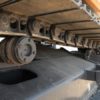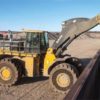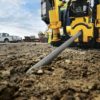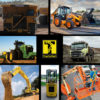Are robots the next construction workers?
Making cars. Tick. Bottling milk. Tick. Lifting and dropping cuddly toys in arcade machines. Tick.
While we’d grown used to seeing robots in car factories, until recently they surfaced very rarely in other industries. Sometimes, indeed, it was as if they belonged – ironically – to a past era.
Suddenly, however, they seem to be in the news again. So what happened?
“Robotics has got to the point where it’s mature enough for people to actually see applications in new industries like construction,” says Julian Sutherland, 49, technical director and fellow for sustainable development at Atkins.
“People are starting to see how we can use robots to do our repetitive tasks on construction sites and make our jobs safer.”
 Sutherland envisages a construction sector in which machines and humans will share duties
Sutherland envisages a construction sector in which machines and humans will share dutiesTraditional production lines, like those used to manufacture cars, use static machines. The building trade, says Mr Sutherland, requires a new breed of robot.
“In construction, machines can’t be static and need to be adaptive. Robots have finally got to that point now in their evolution where they no longer need to be anchored, so it’s becoming a real possibility.”
The robotic revolution, he says, necessitates a whole new approach across the construction industry – which will change the roles played by humans and alter the very concept of the building site.
“A lot of the actual construction needs to move into factories that make components that can then be assembled on site. Ordinary building sites are inefficient in terms of hours worked and can be unpleasant and hazardous.”
Given the skills shortage across the industry, it’s easy to envisage machines taking over certain tasks. Mr Sutherland says this doesn’t mean human builders will become redundant.
 Engineers and architects however have a very low probability of being replaced by robots
Engineers and architects however have a very low probability of being replaced by robots“A human is a relatively efficient tool in terms of size and dexterity. We are adaptive and dexterous and we excel at complex and specialist work.
“By contrast, machines are great at delivering large volumes of very repetitive elements.”
Atkins is exploiting precisely this type of automation in its pre cast concrete, pre fabrication designs.
“A good example is Lime Tree Primary Academy, a modular school which was designed and pieced together on a production line in a factory – with huge benefits to turnaround times.
 Speedy construction: Lime Tree Primary Academy was pieced together in a factory
Speedy construction: Lime Tree Primary Academy was pieced together in a factory
“The project was delivered in only 17 weeks, compared to an anticipated two-year programme.”
Mr Sutherland believes that in the future, machines will be able do all of the repetitive tasks that we currently do.
“Robots excel in places where humans can’t go, particularly in dangerous environments which cause all manner of concern for health and safety experts in highly regulated industries.
 Machines are great at delivering large volumes of very repetitive elements
Machines are great at delivering large volumes of very repetitive elements“Think of some of the things we want to do in the future – like going to Mars, subsea exploration, and expanding our nuclear industry – and it is easy to see where robots will be of huge value.”
It’s no surprise, then, that it’s in these areas that the debate is starting.
Mr Sutherland envisages a construction sector in which machines and humans will share duties – but work is always ultimately overseen by a highly skilled flesh and blood individual.
“Engineers and architects however have a very low probability of being replaced by robots – you just can’t replicate the creativity and judgment of these professions.”













